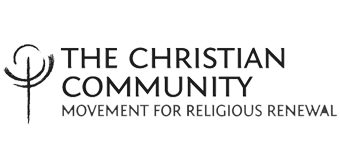Latest News
Kitchen Chat and more…
Kitchen Chat and more…
The ego is the shadow of a great light. In a world where egoism reigns supreme we often imagine: the ego, that am I.
But if that is the only reality, what is then left of us at the end of our life? When someone becomes old and decrepit, gradually all the capacities disappear on which our ego is based. Nothing happens of itself anymore, until we eventually become dependent on the help of other people. The light of self-consciousness weakens, flickers, and goes out. What is then left of us?
What is left on earth is what we call the mortal remains, an empty husk that soon falls apart. Earth to earth; ash to ash.
But death is much more than the inglorious end of life on earth. It is the time when the wheat is separated from the chaff. As the shadow of the ego fades, the light of the Spirit grows. Christ stands at every deathbed and receives the harvest of every human life. Only then does the dying person recognize: Christ is the light of my shadow.
Countless people live as if there will never be an end to their ego, until the irrevocability of the end of life cannot be ignored anymore and there is no longer a way back—only forward, through the eye of the needle.
We don’t need to wait for that moment. We can also try, in the midst of life while we are fully engaged in our everyday existence, to begin to walk this way forward. Then we begin to realize: I am very small, and the world that stands behind me is very large. The greatest of all people on earth, who became the smallest of all, let the light of his shadow manifest with the words: “He must increase, I must decrease.”
Then only, if these words are fulfilled in life and death, is the promise fulfilled: “Christ in me.”
Rev. Bastiaan Baan, July 3, 2023.
“From You come light and strength,
To You stream love and thanks.”
These two sentences from a children’s prayer[1] encompass everything that is divine service and human service—or rather, should be.
God serves His creation ceaselessly with light and strength. Not only the inexhaustible light of the sun and the life forces of nature, but also the light of our consciousness and our life forces—we owe it all to Him. God’s religion—that is His creation.
The only appropriate answer to this gift is love and thankfulness.
Light and strength from God—love and thankfulness from the human being. That is the golden chain that connects us with each other.
As long as humanity has been conscious of its origin and future, people have served God with this answer at all the altars on earth. Perhaps this time, our era, is the only one in the history of humanity in which it is no longer self-evident to serve God in this way. We no longer realize to whom or what we owe the light of our consciousness and our life forces.
Our sciences teach us that the laws of physics and chemistry carry and order life on earth. Our daily existence is the product of these sciences, which teach us to act quickly, efficiently, purposefully, and especially to make a profit on everything. But if love for God and thankfulness to God die out on earth, the golden chain is broken. What will then happen on earth?
Are we perhaps already seeing the consequences of our lovelessness and our thanklessness in the mirror of nature, which is falling into chaos? Or is nature, God’s creation, His answer to the chain that is broken?
Be that as it may, if there is anything that is lacking in our chaotic era, it has to be our answer of love and thankfulness. And if this answer does not come from all of us, as it did as of old, then at least from some places on earth where individuals gather at the altar to profess with heart and soul:
“To the Father God shall stream our soul’s devoted and heart-warm thanks.”[2]
-Rev. Bastiaan Baan, June 2023
[2] From the Epistle of St. John’s Tide.

